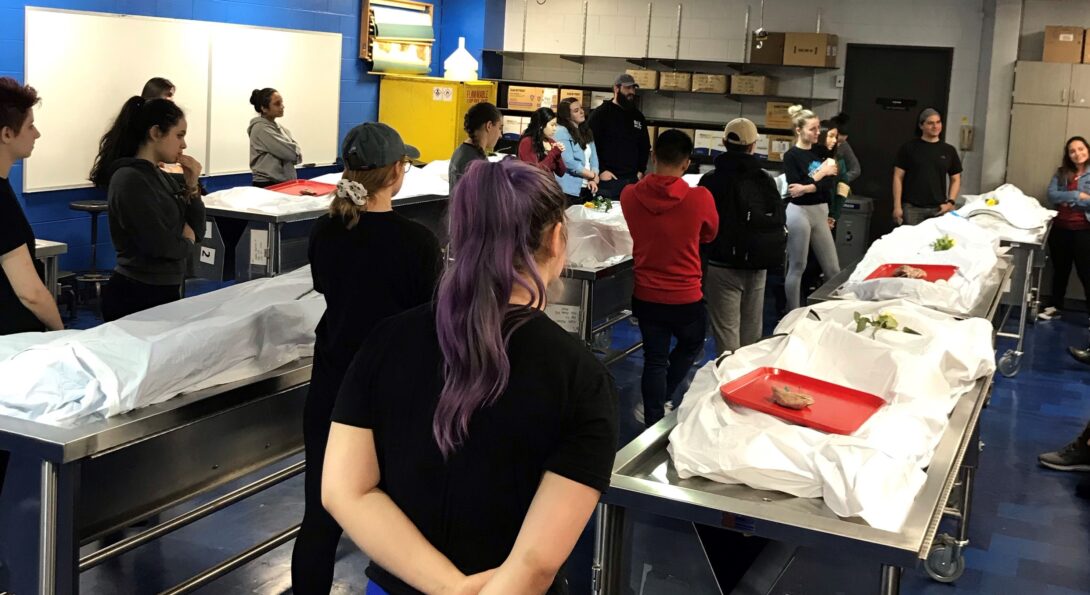Honoring cadaver donors

Thirty-four students gathered in a campus laboratory recently to say goodbye to the teachers they had worked with so closely over the academic year.
It was an emotional gathering, because the teachers were special: 10 people who had donated their bodies for dissection so students could learn the anatomy of the human body.
“This course is unique. Not often do undergrads get the opportunity to dissect,” said clinical instructor Abbey Breckling ’16 KN ’18 MS, who teaches KN 350-351.
The course is open to all UIC undergraduates. Most students are kinesiology majors, but others come from psychology, biology, chemistry and pre-nursing.
“Hands-on dissection teaches them human anatomy in ways that virtual or augmented reality learning can’t,” Breckling says.
“With virtual reality, students don’t appreciate the true relationships between the different body systems. It’s difficult to understand the complexity of textures, thickness or width,” she explained. “VR may show you one person. In our lab, we see 10 different bodies, and each one has its own story.”
Students first encounter prosected cadavers in an anatomy and physiology course, the prerequisite to the upper-level cadaver dissection course offered the following year.